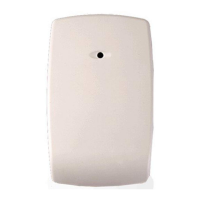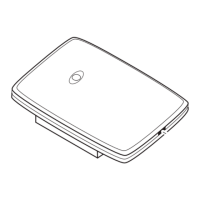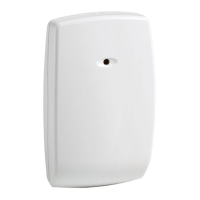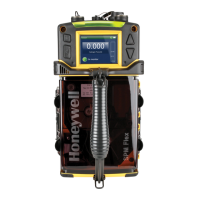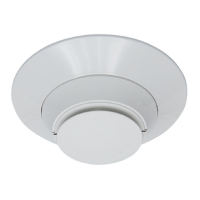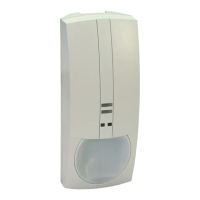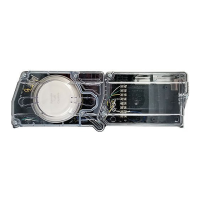Refer to Installation Instructions and diagrams (next page) when installing this product
©2002 Honeywell International Inc. All Rights Reserved
Honeywell, FlexGuard and IntelliSense are registered trademarks
of Honeywell International Inc. - All other brands mentioned are
the trademarks or registered trademarks of their respective
owners. Specifications subject to change without prior notice.
Ê5-051-735-00COŠ
5-051-735-00C
FlexGuard
®
5853 Wireless Glassbreak Detector Supplemental Information
1. General Information
The 5853 Wireless Glassbreak detector with
Transmitter senses the sound of breaking plate,
tempered, laminated, wired, coated and sealed
insulating glass. The self-contained detector includes
a transmitter that can send alarms, tamper signals, and
low battery messages to the control panel. The
sensor is compatible with 5800-series wireless
hardware*, and is designed for continuous operation
using two 3V lithium batteries (CR-123A or equivalent;
included).
Prior to installation, you must:
• Connect its batteries by removing the tab,
• Adjust the detector’s sensitivity, and
• “Enroll” the detector’s serial number.
Refer to the following sections to install the 5853.
This detector is both UL and ULC listed.
*
Compatible control units for use in Canada require the use of
listed RF receivers that have been subjected to compatibility
analyses by Underwriters’ Laboratories of Canada. Refer to the
Installation Instructions for the control unit before installing
burglar alarm components.
2. Connecting Batteries/Initial Power Up
To connect the batteries, remove the tab from the end
of the battery holder. The detector will start its power
up sequence, in which both the LED indicators will
illuminate for one second. (The LED indicators are
described later in these instructions.)
3. Adjusting Detector Sensitivity (Range)
The 5853 has four sensitivity settings, which are set
using the SENS1 and SENS2 DIP switches. The
settings are: 1) maximum; 2) medium; 3) low; and 4)
lowest. By default, sensitivity is set to MAXIMUM.
To change the detector’s sensitivity, use a small
screwdriver to adjust the SENS1 and SENS2 switches,
as shown in the table below:
SENSITIVITY APPROX.
RANGE
SENS1 SENS2
MAX 7.6m (25 ft)
OFF OFF
MEDIUM 4.6m (15 ft)
ON OFF
LOW 3m (10 ft)
OFF ON
LOWEST 1.5m (5 ft)
ON ON
4. Enrolling Detector Into 5800-Series Receiver
Before the control panel will recognize the 5853, you
must program the device's serial number into the
control panel. This process, ("enrolling") is described
in detail in the control panel's installation instructions.
When programming the transmitter, specify:
• Input Type = 3 (Supervised RF)
• Loop Number = 1
You can transmit the device’s serial number
automatically or enter it manually. To transmit the
number automatically, momentarily activate the front
tamper switch. To enter the serial number manually,
refer to the control panel’s instructions to enroll the
serial ID number which appears on the product.
5. Selecting Installation Location
The 5853 can be mounted on the ceiling or the wall.
Choose a mounting location that is at least 2.1m (7
feet) from floor and no more than 7.6m (25 feet) from
the farthest protected glass. Be sure the detector has
an unobstructed line-of-sight to the protected glass!
Before mounting the detector permanently, test it to
ensure that it functions satisfactorily in the chosen
mounting location. Verify that the detector can detect
glassbreak sounds, following the directions in the
“Testing the Detector” section. Ensure that the 5853 is
within range of the receiver, following the instructions
for the signal-strength test found in the control panel’s
installation instructions. (To send the signal required
by the test, activate the detector's front tamper switch.)
If the detector fails, relocate it and repeat both tests.
6. Mounting the Detector
NOTE: If using wall tamper and installing on dry wall
(sheet rock), position the detector so that the wall
tamper is over a wall stud or ceiling joist, or use a
drywall anchor so the tamper screw will not pull out.
NOTE: If the device is ceiling mounted, the end with
the hole (Microphone end) should face the protected
glass.
To mount the detector:
1. Using the 5853 mounting holes as a template,
mark mounting locations on the ceiling or wall.
2. If using the optional wall tamper, remove
the batteries, then mark the wall tamper
location through its mounting hole.
3. If required by the mounting location, install
wall anchors for the mounting screws.
4. Secure the 5853 to the wall or ceiling,
oriented so the microphone has the best line-
of-sight to the protected glass.
5. Reinstall the batteries if previously removed.
6. Close and secure the detector front cover.
7. Testing the Detector
The detector should be tested at least once each year.
Test the detector with the ADEMCO GBS-7 or FlexGuard
FG-701 Glassbreak Simulator. Other simulators will not
give accurate indication of range.
To enter the Test Mode with the GBS-7/FG-701:
1. Stand within 4.6 m (15 feet) of the detector.
2. Switch the GBS-7/FG-701 to ACTIVATE and
MANual modes.
3. Point the front [speaker] of the glassbreak
simulator towards the detector and press the
red START button. The simulator buzzes a
short activation code.
When the detector enters Test Mode, the green LED
on the detector flashes about once per second. If the
green LED does not flash, move closer to the detector
and repeat the procedure.
To enter Test Mode manually:
1. Open the front cover.
2. Use a screwdriver to short the Test Mode
pads on the PC board (see diagram on next
page).
3. Close the front cover.
The detector’s green LED blinks approximately once per
second to indicate that it has entered the test mode.
Testing the Detector (flex and audio signals):
To test the 5853, do the following:
1. Place the detector in Test Mode.
2. Set the GBS-7/FG-701 switches to the TEST
and FLEX positions.
3. Position the GBS-7/FG-701 near the farthest
point of the protected glass, and point the
speaker directly at the detector. If window
coverings are present, close them fully and
hold the GBS-7/FG-701 between the
coverings and the protected glass.
4. Press the red START button. The simulator
clicks on and starts an eight-second armed
period.
5. Generate a flex signal by carefully striking the
glass with a cushioned tool. The GBS-7/FG-
701 responds with a burst of glassbreak
audio.
If the detector receives both the flex and audio signals
properly, its red Alarm LED lights for 5 seconds. (Red
Alarm LED does not latch.)
Testing the Detector (audio signals only):
The GBS-7/FG-701 can also be used to test the
detector’s ability to receive audio signals only. See the
GBS-7/FG-701 Operating Instructions for additional
information. When it receives the audio signal, the
detector flickers its green Event LED.
Exiting Test Mode:
When you have finished testing, exit Test Mode by
following the same procedure used to enter Test Mode.
The detector automatically exits Test Mode five minutes
after the last event is detected.
8. LED Indicators
The detector is equipped with two LEDs: a green Event
LED and a red Alarm LED. When the LEDs are
enabled during testing, they light in a variety of patterns
to convey the detector’s operational status. The
following table summarizes the LED messages.
(Please note that the LEDs are only enabled during
Test Mode, and are inactive during normal operation.)
CONDITION GREEN LED RED LED
Power up ON 1 second ON 1 second
Test Mode Flash once per sec OFF
Test Mode, event detected Flicker OFF
Test Mode, alarm Flash once per sec ON 5 seconds
Low Battery * Flash once per sec Flash once per sec
* If battery voltage drops too low, LEDs are no longer visible.
9. Cover Screw
The front cover can be secured after installation. To do
so, remove the cover breakout flash (illustration on next
page) and secure the front cover with a 6 mm (¼-in.), 2.9
mm (#4) screw (supplied).
10. Maintaining Proper Operation
To maintain the 5853 Glassbreak Detector in proper
working order, please observe the following:
Replace the batteries when the system indicates a low
battery condition (refer to the control panel’s operating
instructions.) Be sure to replace the batteries with the
proper type and voltage, and ALWAYS replace both
batteries at the same time.
The installer should inform the end user that fans, air
conditioners, blowers, loudspeakers, or other sources
of vibration and sound should not be introduced into
the protected area after installation of glassbreak
detectors. If unavoidable, the end user must contact
the alarm service company to re-adjust/re-test the
equipment as needed. Additionally, this device should
not be relocated without the advice or assistance of the
alarm service company.
11. Protected Glass Types Chart
NOTE: The 5853 is NOT recommended for protection of glass areas
smaller than 27.6 cm x 27.6 cm (10-7/8 inches x 10-7/8 inches).
Nominal Thickness
Glass Type*
Minimum Maximum
Plate
2mm (3/32 in.) 10mm (3/8 in.)
Tempered
3mm (1/8 in.) 10mm (3/8 in.)
Laminated
1
3mm (1/8 in.) 14mm (9/16 in.)
Wired
6mm (1/4 in.) 6mm (1/4 in.)
Coated
2, 3
3mm (1/8 in.) 6mm (1/4 in.)
Sealed Insulating
1, 3
3mm (1/8 in.) [13mm
(1/2 in.) overall]
6mm (1/4 in.) [19mm
(3/4 in.) overall]
* Minimum size for all types is 28cm (11 in.) square; glass must be
framed in the wall or mounted in a barrier at least 0.9m (36 in.) wide.
1
Protected only if both plates in the unit are broken
2
Coated glass with security films up to 0.35mm (14 mils) thick (including films
for solar protection) may be used. Evaluated with the these products: 3M
®
SCOTCHSHIELD
®
SH14CLARL – 0.35mm (14 mils), 4 ply film; Film
Technologies International, Inc.’s GLASS-GARD GGLL 1200 has been
evaluated with this product by Underwriters Laboratories, Inc.
3
In compliance with Underwriters Laboratories of Canada’s Standard for
Intrusion Detection Units (CAN/ULC-S306-M89):
a. Plate glass 3mm (1/8-in.) to 10mm (3/8-in.) can be used.
b. ULC recognizes a maximum range for protecting sealed insulating glass
and coated glass of 3.8m (12.5 ft.); sensitivity should be set to Max.
12. Specifications
Power: Two 3 V Batteries (included). Replace only with
ADEMCO #466, Panasonic CR123A, Sanyo CR123A, Duracell
DL123A, or Varta CR123A (Lithium Manganese Dioxide)
Ranges: Maximum range is 7.6m (25 ft) from farthest
protected glass. No minimum range.
Operating Temperature: -10° to 50° C (14° to 122° F)
Dimensions: 12.5cm (4.95") x 7.8cm (3.09") x 2.8cm (1.1")
Weight: 146g (5.12 oz.)
Accessories: ADEMCO GBS-7 or FlexGuard FG-701
Glassbreak Simulator
Compliance: FCC ID: CFS8DL5853, CANADA: 1748A-5853,
UL Listed, ULC Listed, C-Tick
13. NOTICES
FCC NOTICE
This device complies with Part 15 of FCC rules. Operation is subject to the following
two conditions: (1) This device may not cause harmful interference, and (2) this
device must accept any interference received, including interference that may cause
undesired operation.
TO THE INSTALLER
Regular maintenance and inspection (at least annually) by the installer and frequent
testing by the user are vital to continuous satisfactory operation of any alarm system.
The installer should assume the responsibility of developing and offering a regular
maintenance program to the user as well as acquainting the user with the proper
operation and limitations of the alarm system and its component parts.
Recommendations must be included for a specific program of testing (at least weekly)
to ensure the system’s proper operation at all times.
REFER TO THE INSTALLATION INSTRUCTIONS FOR THE RECEIVER/ CONTROL
WITH WHICH THIS DEVICE IS USED FOR DETAILS REGARDING WARRANTY
INFORMATION AND LIMITATIONS OF THE ENTIRE ALARM SYSTEM.

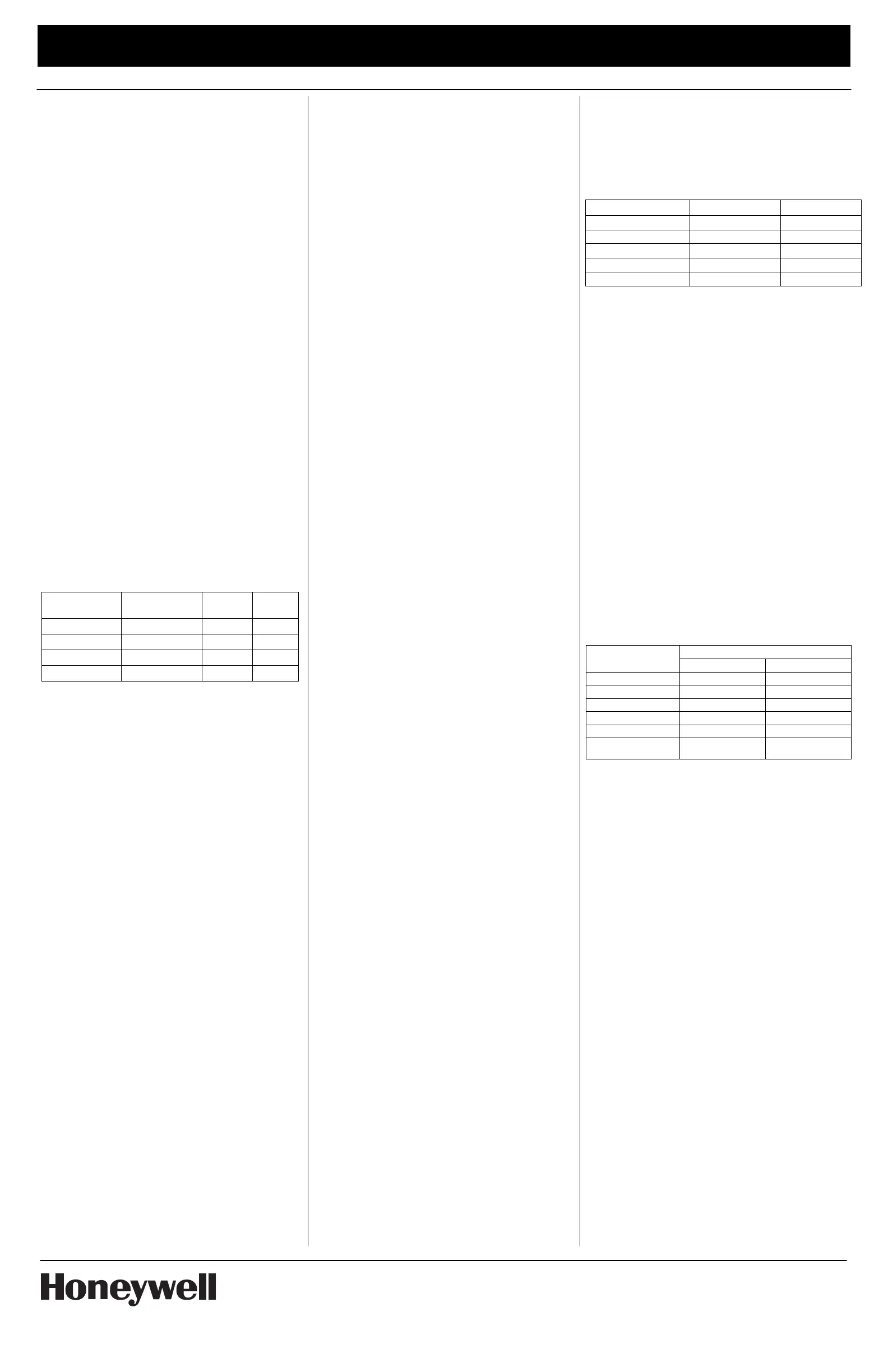